 |
| UFO eyewitness Kenneth Arnold, center, examines an alleged photo of a UFO with two other pilots. |
Seventy years after the sighting that started it all, what are unidentified flying objects and where do they come from?
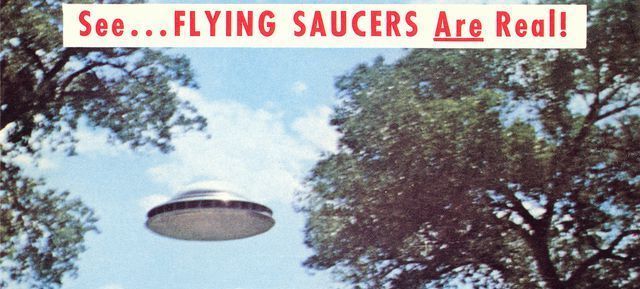 Today is World UFO Day,
when UFO enthusiasts around the world celebrate that strange phenomenon
and remind the public that many mysteries remain unsolved. A whole 71
years after the sighting that kicked off the worldwide UFO craze, we are
still no closer to
determining what exactly causes hundreds of thousands of people to
believe they have been witnesses to flying saucers.
Today is World UFO Day,
when UFO enthusiasts around the world celebrate that strange phenomenon
and remind the public that many mysteries remain unsolved. A whole 71
years after the sighting that kicked off the worldwide UFO craze, we are
still no closer to
determining what exactly causes hundreds of thousands of people to
believe they have been witnesses to flying saucers.
The History of “Flying Saucers”
On
June 24th 1947, civilian pilot Kenneth Arnold was flying his private
airplane over the Pacific Northwest when he suddenly realized he was not
alone in the skies. Near Mt. Rainier, Washington Arnold spotted
“nine objects, glowing bright bluish-white” flying nearby. Eight of the
objects were roughly disc-shaped, while the ninth larger object
resembled a crescent. The nine objects were flying in a v-shaped
formation.
Arnold estimated the craft were
flying somewhere around 1,200 miles an hour and that he was witnessing a
military exercise. He also compared their motion to a “saucer if you
skipped it across water.” The objects obviously did not resemble any
known aircraft and at the time there were no aircraft capable of flying
in formation at Mach 1.5—Chuck Yeager would break the sound barrier only two months later.
The press misconstrued the “saucer” comment,
applying it to their physical description, and the term flying saucer
was born. Obviously, since the objects were beyond the ability of
humans, newly minted UFO experts declared the objects had to be from
space and evidence of life on other planets. Though in strict terms, a
UFO is merely a mysterious flying craft and so is not inherently tied to
the idea of visiting aliens.
"Could other stars
harbor other forms of life, and could they be more advanced than ours?"
If there are aliens, UFO thinkers speculated, it would stand to reason
that at least some of them are millennia more advanced than we are,
leaping across the universe in the blink of an eye.
Back when Kenneth Arnold’s sighting over the
Pacific Northwest triggered a flying saucer mania, with flying saucers
reported worldwide, the fast pace of technological development which saw
the U.S. go from subsonic propeller-driven to supersonic jet-powered
fighters and a military based on conventional to nuclear weapons in less
than ten years drove an intense interest in UFOs. The U.S. was also set
to push into space with the establishment of NASA and the eventual goal
of reaching the moon. Anything seemed possible, so why not aliens?
In
the 1970s, as environmental problems mounted, trust in government
decreased and the threat of nuclear war loomed, the emphasis shifted to
reports of face-to-face contact with alien species, many of which were
apparently unhappy with how humans were ruining the planet.
In
the 1990s this narrative of direct interaction grew to its most
extreme, with thousands reporting that they had been “abducted” by
aliens, who then performed medical experiments.
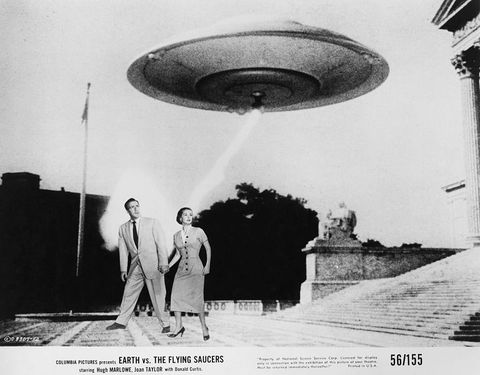
Is the Government Hiding Something?
If
you take these experiences to be even remotely true, the logic leads
you to an inevitable conclusion: The U.S. government knows far more than
it lets on about flying saucers. One conviction among UFOlogists is
that the U.S. government not only knows more about aliens than it lets
on, but that actively cooperates with them. According to some conspiracy
theories, the federal government, particularly the national security
apparatus, allows aliens to maintain underground bases, such as the one
allegedly underneath Dulce, New Mexico, or in the mountain next to the
famous Area 51 in Nevada.
Another, more plausible theory
is that a secret arm of the U.S. government achieved a technological
breakthrough to the point where its craft are mistaken for the work of
aliens. This technology, proponents explain, is so advanced the
government is keeping it under wraps. Still, if Kenneth Arnold had seen
top-secret military aircraft in the 1940s, why does the U.S. military
not have anything like his “flying saucers” 70 years later?
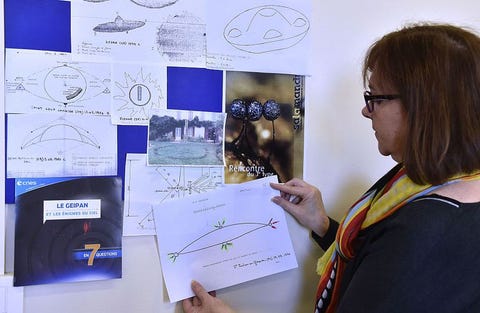
The military's engagement with flying saucers isn't just conspiratorial. In December 2017, The New York Times published an account involving U.S. Navy fighter pilots and their encounter with unidentified flying objects. The encounter,
which took place in 2004, involved UFOs sighted on radar, by pilots
themselves, and actual video of the mysterious objects. Six months later
the account was followed up by another, also involving Navy pilots, that reportedly took place in 2015.
The
Navy sightings were some of the best accounts in decades, and involved
some of the most highly trained pilots and advanced sensors in service
anywhere. If the objects involved in the sightings were real and were
not U.S. government property their technological superiority could be a
real threat to our national security.
Yet
despite all of this the Navy has offered no explanation for the events
and appears disinterested in investigating the matter further.
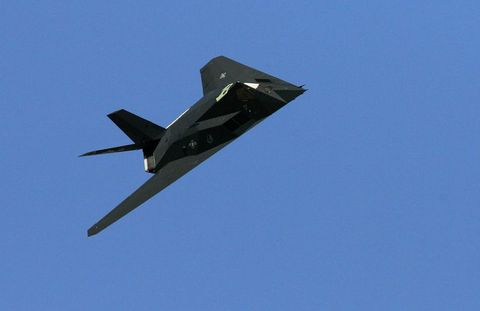 |
| F-117A Nighthawk stealth fighter. |
The Suspicious Decline
The
Navy's UFO interaction is notable in large part because it is the
exception that proves the rule of modern UFO sighting trends: They're
just not happening so much despite the fact that the smartphone
revolution should ostensibly increasing sightings if UFOs exist.
Every
single day, hundreds of millions of people are carrying a high quality
camera in their pockets but there has been no corresponding explosion in
UFO photos or video. The connected nature of the internet and social
media allows ordinary people to reach a wide audience, but interest in
talking about so-called “alien abductions” has dropped precipitously in
the last ten years.
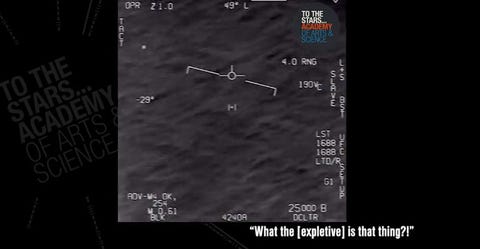
Even in the face of those seemingly obvious facts,
it can be tough to shake the uncanny experience of seeing the
explainable with your own eyes. In May of 1987 on an overnight trip to
the San Francisco State University Sierra Nevada Campus at Yuba Pass, California with my high school biology class, it happened to me.
After
curfew, about a dozen of us decided to climb a nearby tree-covered
ridge and sat in silence, taking in the clean, cool night air and the
twinkling stars above.
Then, someone saw it, and
pointed it out to us all. It was a white, blinking light not unlike a
satellite visible from Earth, but brighter. It was moving faster than
anything I had ever seen before. But the real shock came when it made
two sets of three zig-zagging turns, like a cue ball hitting the side of
a pool table. Then it vanished over the horizon in seconds.
So
what was it? I've asked myself over and over. Was it a classified
military aircraft? At the time the F-117A Nighthawk, the world’s first
stealth fighter was highly classified
but we now know the aircraft regularly flew at night from Area 51 in
Nevada over nearby Lake Tahoe, using its electro-optical targeting
systems to pinpoint individual boats on the lake for target practice.
Still,
F-117s—or any other publicly known aircraft in the past thirty
years—are incapable of the maneuvers I saw that night. It was impossible
to tell the object’s speed and altitude. If it was a high-flying
aircraft, it was moving much faster than anything with the possible
exception of the SR-71 Blackbird—and the SR-71 couldn’t pull off turns
like that. If it was flying low we should have heard engines—and a sonic
boom—but the encounter was totally silent.
Thirty one years later, all I know was that I saw a flying object and I could not and cannot identify it.

The State of UFOs Today
Today,
71 years after Kenneth Arnold’s sighting, we are still no closer to the
truth behind the UFO phenomenon. There is a real phenomenon, but
whether it is based in mass hallucinations, secret government aircraft,
or actual beings from another planet is still up in the air.
James Abbott, author of The Outsider’s Guide to UFOs,
says, “For anyone with a truly open mind, the a priori case for UFOs as
a scientific anomaly is firmly established. We do not have a good
understanding of what the inexplicable sightings are, but the numbers,
credibility of observations, and the lack of satisfactory scientific
explanation in many cases, mean that we have to start looking at the
phenomenon as a scientific problem; one which must be given long-term,
serious scientific attention.”
On the other side
of the fence is the bulk of scientific community, many of which are
unconvinced. Skeptics believe that extraordinary claims, from claims of
aliens to government aircraft that can make abrupt 90 degree turns in
violation of the laws of physics, require extraordinary proof. This is
not an unreasonable demand but it also, given the lack of accumulated
evidence over the better part of a century, seems unlikely to be
fulfilled anytime soon.
Until then, keep your eyes on the sky.
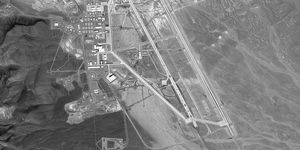
No comments:
Post a Comment
Note: Only a member of this blog may post a comment.